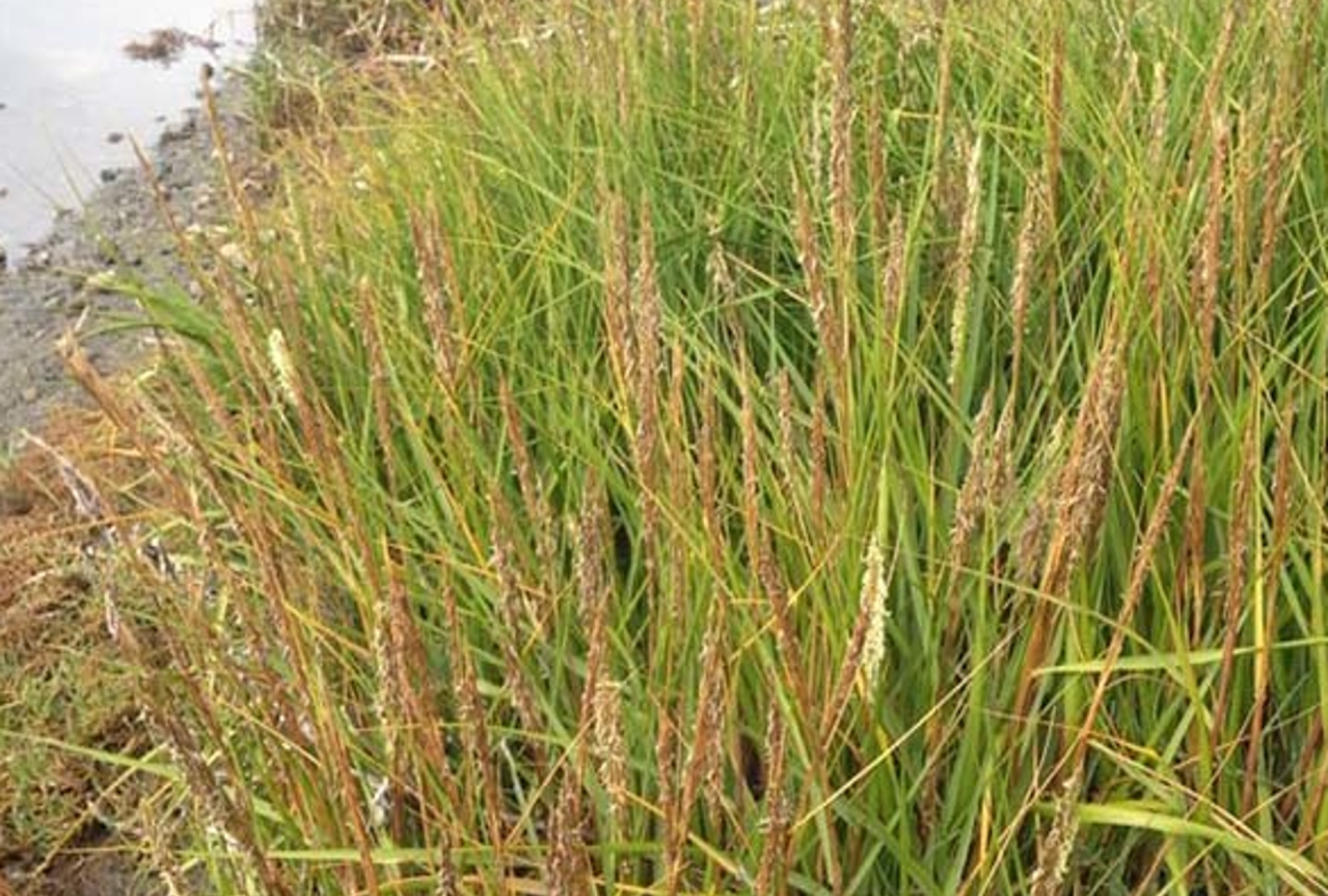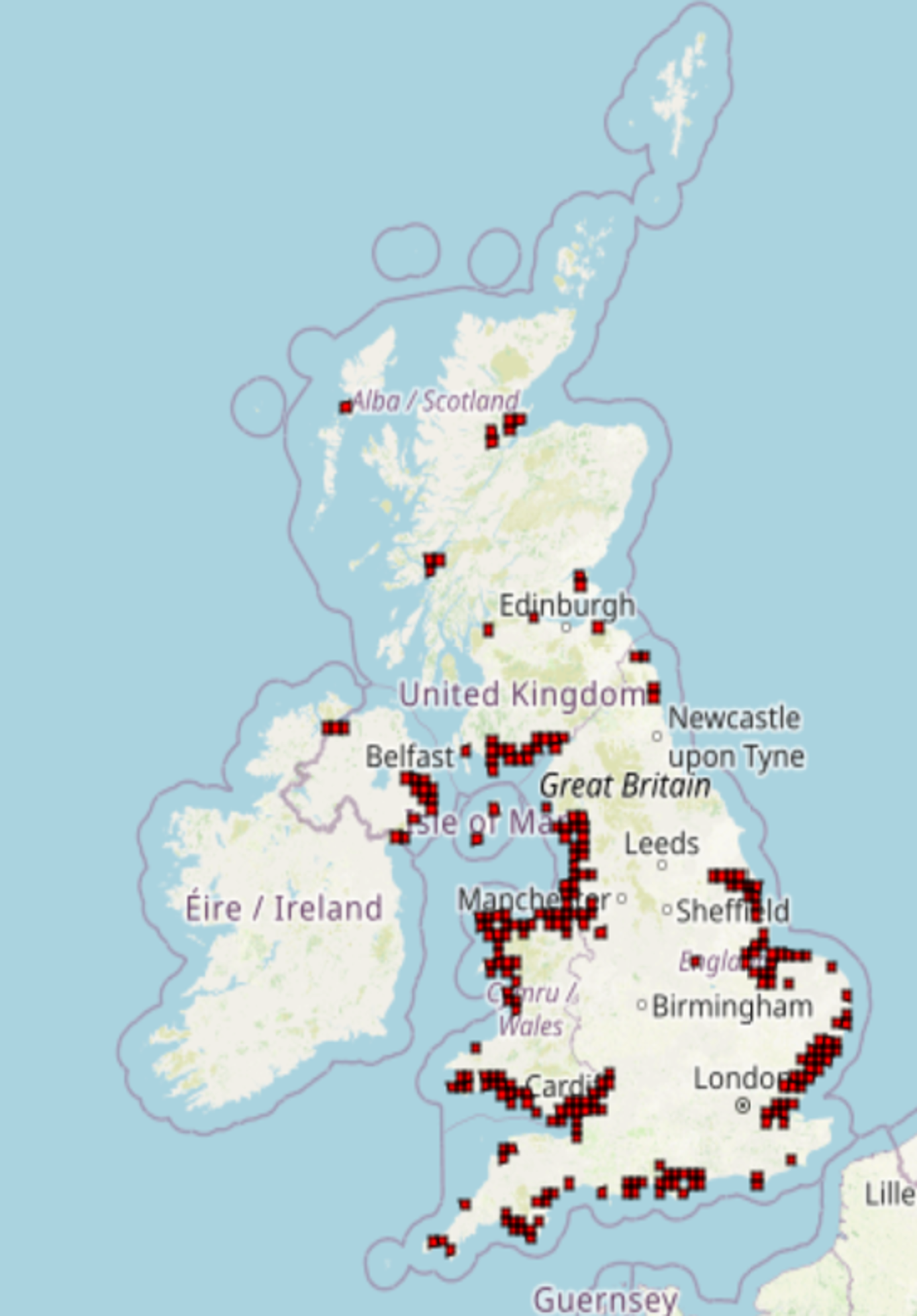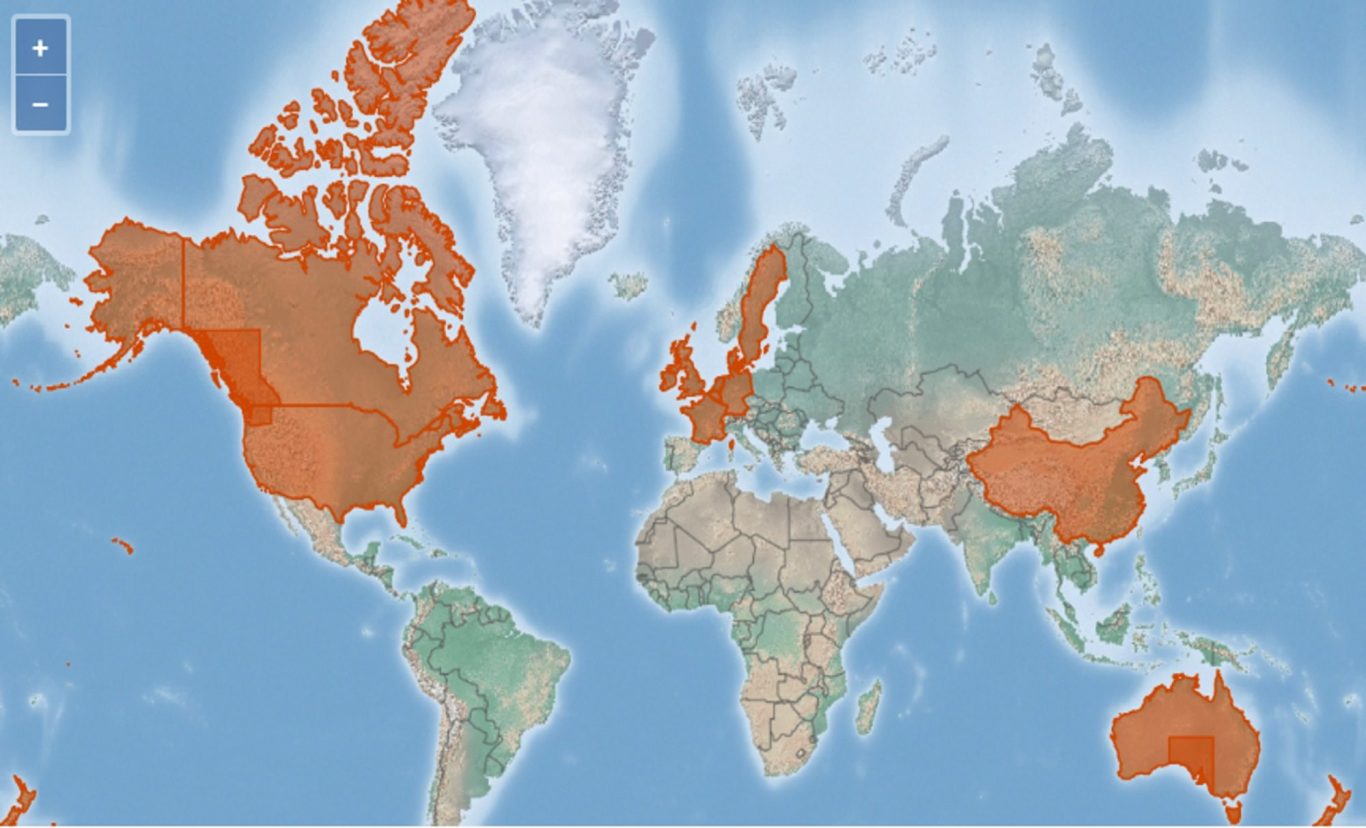Common Cordgrass - Spartina anglica
Key Findings
Spartina anglica (fig. 1) originated in England, specifically in Southampton, in the 1820s, after the hybridisation of the non-native S. alterniflora and the native S. Maritima (Lacambra et al, 2004).
Niche and Biology:
Common cordgrass is found in coastal areas around the mean high-water mark, generally in marsh, mud-flat, salt-flat and estuarine areas (Roberts, 2008). The species is known to outcompete related species and native species, spreading quickly where conditions are favourable (Invasive Secies Northern Ireland, n.d.). One of the species’ notable features is a wide, dense root network, acting to stabilise the soil it grows in (Invasive Secies Northern Ireland, n.d.).
Distribution:
The species has undergone multiple periods of rapid expansion in the UK, both naturally and due to human input. As such, its modern distribution in the UK appears as in fig. 2: common along coastal regions of England, Wales and Northern Ireland, although much less common in Scotland (NBN Atlas, 2024). This spread was initially a natural process, but in the 1920s it became intentional. The dense root systems of the species mean it is highly effective at stabilising soils, and as such was planted widely to combat coastal erosion processes (Lacambra et al, 2004).
Common cord grass has not yet been found in the East Grampian coastal area.
This effectiveness at preventing coastal erosion led to the intentional planting of the species in many countries, including China, the United States, Germany, and New Zealand (Roberts, 2008). As a result, its global distribution now appears as in fig. 3:
Impacts:
There is much debate over the impact of common cordgrass. Even in the UK opinions of the species vary by region (Lacambra et al, 2004). Evidence is somewhat conflicting as to the effect of common cordgrass on biodiversity. While it can act as a habitat for organisms, the species’ dominance can create areas of limited plant variety, which has a knock-on effect on wider biodiversity (McCorry and Otte, 2001). Additionally, its soil stabilising effect can significantly damage important estuarine, marsh and mud-flat habitats. These areas can be very important for native bird species; thus, the spread of common cordgrass could put their populations at risk (Invasive Species Northern Ireland, n.d.).
In terms of farming, the effect of common cordgrass is more positive. They can improve agricultural soils by increasing nutrients and organic matter, and make a good food source for livestock (Lacambra et al, 2004).
Management:
Various management techniques have been developed for common cordgrass. Multiple herbicides can be used, in addition to a species of planthopper (Prokelisia spp.) which feeds on the leaves. Simply cutting back the plants may increase their prevalence in an area, however cutting back and then smothering (blocking sunlight), can be an effective method of removal. (Roberts, 2008)

fig. 1: Common Cordgrass (Noxious Weed Control Board, n.d.)

fig. 2: Common cordgrass identified between 1800-2024. (NBN Atlas, 2024)

fig. 3: Global Distribution of common cordgrass (Roberts, 2008).
Notes
Linked Information Sheets
Key sources of Information
Reviewed on/by
Status
Live. Next update due 22/11/24
To report errors, highlight new data, or discuss alternative interpretations, please complete the form below and we will aim to respond to you within 28 days
Contact us
Telephone: 07971149117
E-mail: ian.hay@stateofthecoast.scot
We need your consent to load the translations
We use a third-party service to translate the website content that may collect data about your activity. Please review the details in the privacy policy and accept the service to view the translations.

